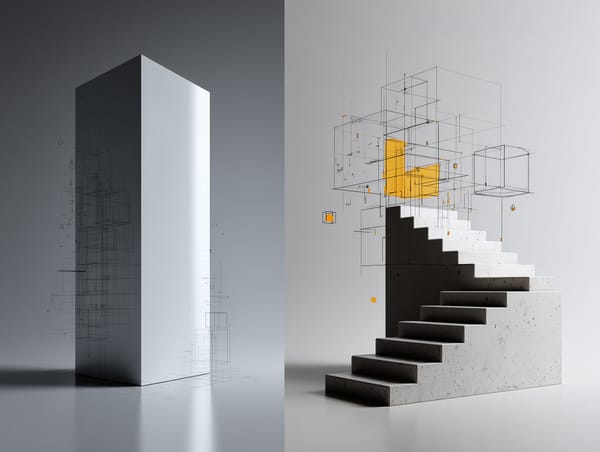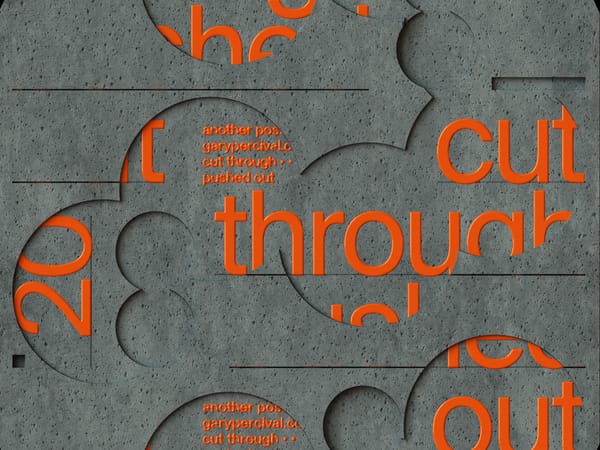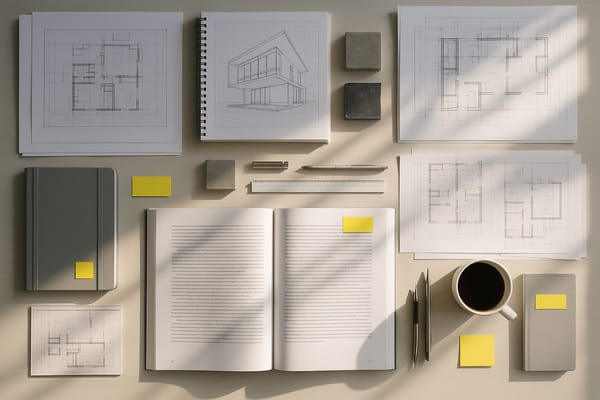Deadline Dilemma: Balancing Speed and Quality in Creative Work
When working against a tight deadline, prioritise the most important aspects of the project.


As creatives, we've all experienced the deadline dilemma—the constant conflict between working quickly to meet tight deadlines and taking the time necessary to produce high-quality work.
Too often, unreasonable deadlines force us to rush through projects, which has a negative impact on the end results. We need to cut corners, limit iterations, and skip steps that would improve the work.
However, working at a fast pace does not have to mean sacrificing quality. Even when faced with a tight deadline, you can strike a balance between speed and diligence. It's all about effectively allocating your time and effort. This allows you to work more efficiently while also improving your creative solutions.
In this post, we'll explore strategies for balancing speed and quality when you're under the gun. The key is effectively prioritising the elements that matter most to your clients and to maintaining your standards. With the right framework, you can scope new projects accurately, lock in the must-have details upfront, get client sign-offs incrementally, and still allow time for final refinements.
The result is work delivered on time that doesn't compromise your creativity or pro standards. By balancing speed and quality, you prevent burnout while keeping clients satisfied.
Let's dive into time management and priority-setting tactics that can help you master the deadline dilemma. With the right approach, tight turnarounds don't have to mean poor execution. You can ship on time without cutting corners on vision and craftsmanship.
Set realistic timelines.
When faced with an unreasonable deadline, don't be afraid to push back and request more time. Explain that the scope of work necessitates a specific timeline to allow for adequate research, ideation, revisions, and testing. Shortcutting the process will reduce the quality of the final product.
Create a realistic schedule based on the project's requirements and your experience level. When done correctly, a website redesign can take as long as 4-6 weeks. An animated video could take anywhere from 6 to 8 weeks. Explain the significance of each project phase and how compressing them results in inferior work.
If extra time is not an option, try to reduce the scope. Determine what is absolutely necessary and move other "nice-to-have" features to a later stage. It's preferable to deliver excellent core features over a wider range of mediocre work.
It is not always possible to avoid being stuck with tight turnarounds. However, don't simply accept unrealistic deadlines without pushing back. **Educate clients on the importance of proper time management.** Show how quality work necessitates diligence at each stage of the process. Setting realistic schedules ultimately benefits both of you.
Prioritising Key Elements
When working against a tight deadline, prioritise the most important aspects of the project.
Determine the critical elements that are absolutely necessary for achieving the goals and meeting user needs. Then focus your energy on refining and perfecting those aspects.
For example, the most important elements of a website are likely to be the homepage design, primary templates, core pages, and critical functionality such as forms and the shopping cart. Above all, make sure these are correct. Lower-priority pages and nice-to-have features may need to be simplified, reduced, or left for later.
For a branding project, define the brand strategy, logo, and core brand elements such as typography and colour palette, as well as primary templates and graphics. If time is of the essence, reserve secondary brand assets for later phases.
Investing more time in the most important aspects helps to maintain quality where it is most needed. Avoid the temptation to spread yourself thin and try to perfect everything. When you're pressed for time, be selective and strategic about how you use it. Perfect the pieces that have the most impact. You can always go back and improve secondary elements later.
Work in phases.
Breaking projects into distinct phases is an effective way to strike a balance between speed and quality.
First, concentrate your efforts on conceptualising and developing the core elements. In the second phase, refine and polish.
For example, in a first 1-2 week sprint, quickly sketch and decide on a design direction. Determine the foundational elements, such as layout, basic styling, core content, and minimal functionality.
Then devote time to evolving the initial concept into a polished final product. Refine the layout and styling, add content, and develop new features. Once the core is established, you can work diligently to refine it.
Consider a "minimum viable product" for phase one, which is the least amount required to convey the concept and test it with users. Resist the temptation to add too many details at first. Then build upon that solid foundation.
Inform clients that you will be working in an agile, phased manner when faced with tight deadlines. Explain the advantages of defining core elements first before refining. Finally, this approach enables you to strike a balance between speed and quality.
Define the Minimum Viable Product.
For projects with extremely tight deadlines, focus on developing a "minimum viable product" (MVP) that meets the most basic needs and establishes a creative direction. Then iterate and improve later.
The MVP should establish:
- The fundamental concept or design system.
- Just enough content to communicate the essence
- Focus on essential functions
Resist the urge to add too many features or details in a short period of time. That level of completeness will degrade quality. Instead, concentrate your efforts on the MVP, which allows for user testing and feedback to guide future development.
Communicate clearly to clients what the MVP will entail. Make it clear that additional rounds will improve the product following initial feedback. Rushing beyond the viable minimum frequently results in additional rework down the road.
The MVP approach requires critical thinking about the true essentials. Removing unnecessary fluff allows you to focus your efforts on developing a strong creative direction and user experience. With the fundamentals in place, you can continue to refine and improve the product over time. Think MVP first.
Iterate quickly
Rapid iteration is critical for balancing speed and quality on a tight schedule. Use short, focused sprints to quickly generate and refine ideas.
Set specific deadlines for each iteration phase, including ideation, initial design, testing, and refinement. This cadence encourages you to move quickly but thoughtfully through the critical stages, avoiding getting bogged down.
Use tools such as mood boards, wireframes, and prototypes to quickly test ideas. Don't spend time on visual polishing first. Concentrate on expressing concepts clearly.
Collect feedback early and frequently throughout the sprint phases. Ask specific questions about priority issues. Rapid feedback enables quick pivots when needed.
Allow later phases to add details and production value once the core direction has been established through iteration. Quick cycles produce timely, polished results.
Learn to Let Go.
Creators can become obsessed with refinements, always seeing areas for improvement. However, endless tweaking can be counterproductive when working against a tight deadline.
Know when to declare a project "done" based on:
- It achieves its core objectives.
- Major issues have been resolved.
- It is ready for user testing.
- Decreasing returns on effort.
Maintain a clear focus on priorities. Avoid non-critical details. Perfectionism can be detrimental to one's own success.
Maintain a realistic perspective on the quality achievable within the time frame. "Done is better than perfect" avoids wasting effort.
Letting go allows you to focus on the next project and find new inspiration. When revisions produce minimal gains, it is time to move on.
Conclusion:
With the right approach, you can complete quality work quickly. Prioritise key elements, work in phases, and iterate quickly. Maintain diligence in the face of tight time constraints.
Push back against unrealistic deadlines. Educate clients on how to allocate proper design time. Don't default to rushing. Establish MVPs first.
Strive to strike a balance between pragmatism and perfectionism. Move on when the work reflects core goals and adequate effort. Prevent wasting energy.
With practice, balancing speed and quality becomes easier. Creativity thrives under smart constraints. Produce polished work efficiently by focusing and iterating.
Maintain high standards even when working in short timeframes. With proper prioritisation, you can provide excellence on time.
On your next deadline-driven project, try these speed-up strategies without sacrificing quality.



